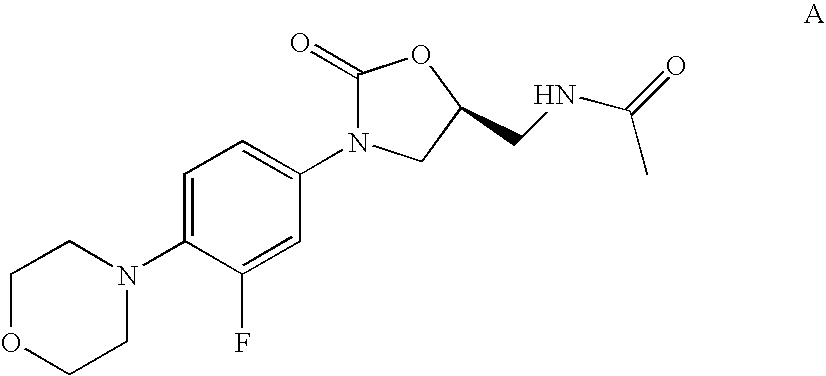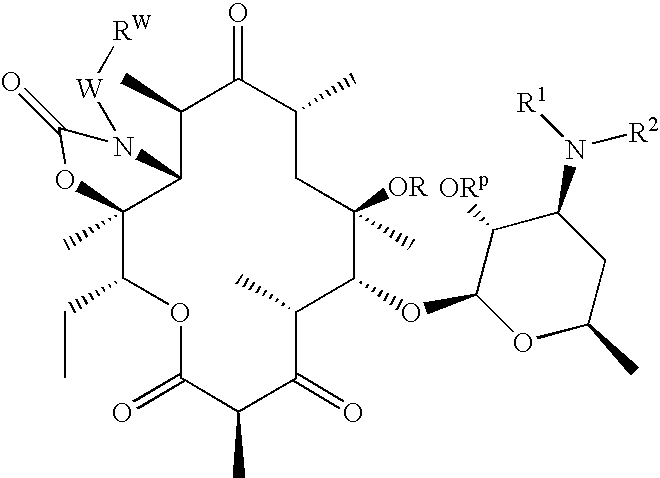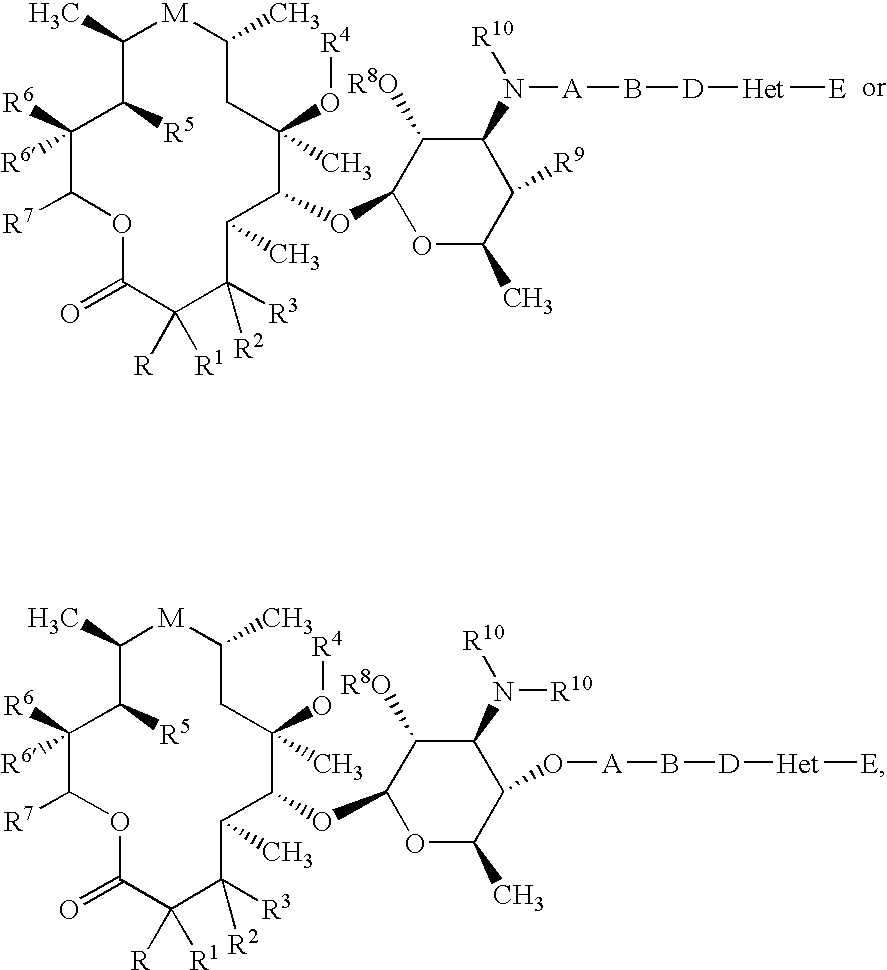Bifunctional Macrolide Heterocyclic Compounds and Methods of Making and Using the Same
a technology of bifunctional macrolide and heterocyclic compounds, which is applied in the field of antiinfective, antiproliferative, antiinflammatory and prokinetic agents, can solve the problems of patients infected with such resistant bacteria, the belief has been challenged, and the resistance of microorganisms to currently effective therapeutic agents continues to evolve. serious and often time fatal results
- Summary
- Abstract
- Description
- Claims
- Application Information
AI Technical Summary
Benefits of technology
Problems solved by technology
Method used
Image
Examples
example 1
Exemplary Compounds
[0217] Exemplary compounds synthesized in accordance with the invention are listed in Table 1.
TABLE 1Compound NumberStructure4041
example 2
Synthesis of Compound 40
[0218] Scheme 5 illustrates the synthesis of compound 40. Mesylate 48 served as the alkylating agent for 1-(2-hydroxyethyl)piperazine to afford alcohol 49. Mesylation of 49 gave mesylate 50, which was used to alkylate amine 2 to yield compound 40.
Synthesis of Alcohol 49
[0219] A solution of mesylate 48 (500 mg, 1.72 mmol; synthesized from 3-fluoroaniline using chemistry reported in the literature (Brickner, S. J. et al. J. Med. Chem. 1996, 39, 673)) in N-methylpyrrolidone (5 mL) was treated with 1-(2-hydroxyethyl)piperazine (225 mg, 1.73 mmol), and N,N-diisopropylethylamine (Hunig's base or i-Pr2NEt, 0.3 mL, 1.73 mmol) and the mixture was heated to 95° C. for 3 hours (hr). The reaction mixture was cooled to room temperature, diluted with ethyl acetate EtOAc, 30 mL), and washed with water (H2O, 3 mL). The aqueous layer was treated with 2 g of sodium chloride (NaCl), then 20 mL of chloroform was added and the mixture was stirred at room temperature for 30 m...
example 3
Synthesis of Compound 41
[0222] Scheme 6 illustrates the synthesis of compound 41. Known amine 3 (for a synthesis see: Brickner et al., J. Med Chem., vol. 39, p. 673 (1996)) was condensed with trans-2-formyl-1-cyclopropanecarboxylic acid 52 (prepared from the saponification of the commercially available ethyl ester) to form aldehyde 51, which was used to alkylate amine 2 to yield compound 41.
Synthesis of Carboxylic Acid 52
[0223] A solution of ethyl trans-2-formyl-1-cyclopropanecarboxylate (2.0 mL, 14 mmol) in MeOH (30 mL) was treated with 1.0 M aqueous NaOH (30 mL, 30 mmol) and stirred for 30 min at 23° C. The reaction mixture was quenched by the addition of 6 M HCl (10 mL, 60 mmol) and extracted with CH2Cl2 (3×50 mL). Drying (Na2SO4) and evaporation provided trans-2-formyl-1-cyclopropanecarboxylic acid (carboxylic acid 52) as a white crystalline solid (1.5 g, 88%).
Synthesis of Aldehyde 51
[0224] A solution of carboxylic acid 52 (0.68 g, 0.60 mmol) in CH2Cl2 (5 mL) was treated...
PUM
| Property | Measurement | Unit |
|---|---|---|
| thick | aaaaa | aaaaa |
| temperature | aaaaa | aaaaa |
| resistance | aaaaa | aaaaa |
Abstract
Description
Claims
Application Information
 Login to View More
Login to View More - R&D
- Intellectual Property
- Life Sciences
- Materials
- Tech Scout
- Unparalleled Data Quality
- Higher Quality Content
- 60% Fewer Hallucinations
Browse by: Latest US Patents, China's latest patents, Technical Efficacy Thesaurus, Application Domain, Technology Topic, Popular Technical Reports.
© 2025 PatSnap. All rights reserved.Legal|Privacy policy|Modern Slavery Act Transparency Statement|Sitemap|About US| Contact US: help@patsnap.com



